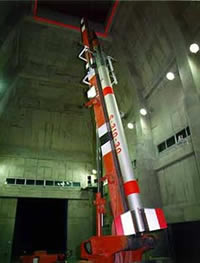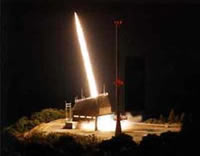TOP > Topics > 2002 > S-310-30 experiment completed
![]()
S-310-30 experiment completed


S-310-30 rocket was successfully launched at 19:30 on February 6 from Kagoshima Space Center in Uchinoura, Kagoshima. The purpose of the S-310-30 experiment this time was to research into the thermal flow from nitrogen molecules to electrons in the thermosphere, that is at an altitude of 100km. The main part of the instrument-boarding area was occupied by nitrogen molecule energy level measuring instruments. These measuring instruments were first introduced and loaded onto the S-310-24 rocket in 1996, to which some improvements have since been made. In addition to these improved instruments, plasma-density, temperature and wind-measuring instruments were also loaded this time to obtain overall data. Miniature telemeters and radars as well as ordinary types were also loaded. As so many instruments and equipment were loaded, the total length of the rocket turned out to be 70cm longer than the standard-type S-310-24 and the longest compared to past models. With new propellant and some changes made in the size of the rocket engine, it seemed as if this was a test of a brand new rocket. Due to detailed adjustments at the site in addition to bad weather, the rocket was launched 5 days later than the scheduled time of February 1. However, excellent data were obtained, and I felt greatly relieved as the efforts of experiment teams and related organizations had been rewarded. Through this experiment, I found two valuable practices that we had and should maintain in the future, namely a prompt notification to involved organizations at each step of the process toward the launch and good teamwork shown during the launch operation.
April 24, 2002




